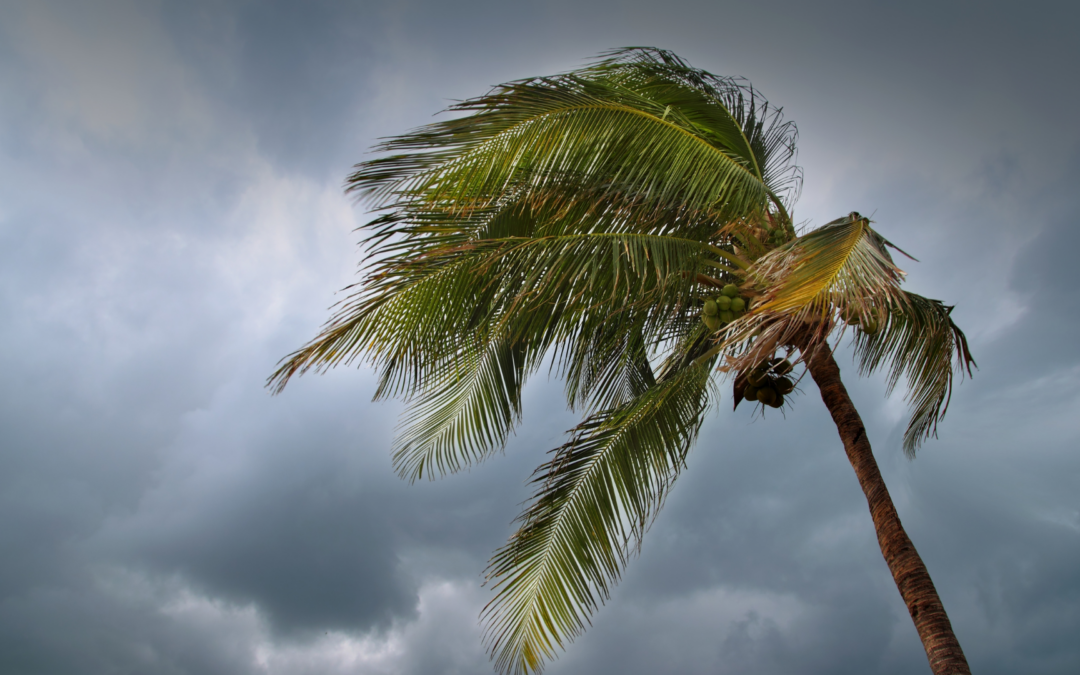By Peter McArdle (Engineers Without Borders Australia), Anna Saxby (Humanitarian Advisory Group) and Neil Greet (Australian Security Leaders Climate Group)
Increasing uncertainty
Vanuatu is one of the most at risk countries in the world for natural disasters, especially tropical cyclones, and the frequency and intensity of cyclones is increasing due to climate change. Cyclone Lola hit Vanuatu on 26 October 2023 impacting 80,000 people.[1] The Category 5 cyclone was the third major one to hit Vanuatu in seven months.[2] Critical infrastructure including roads, bridges, schools and homes were wiped out, and communities who were only just beginning to recover from the twin cyclones in March, Judy and Kevin, were again faced with the mammoth task of rebuilding what was lost and damaged.[3]
This is just one example of the impacts of climate change. It highlights that the increasing uncertainty in our changing world means infrastructure needs to be more resilient to better prepare communities to face the growing frequency and intensity of disasters.
But infrastructure is much more than concrete and steel
When we think of infrastructure that is climate-resilient, we might think of strong buildings; hardy, weather-resistant roads; or continuous electricity. Few would question this, and the ability of infrastructure to withstand increasingly harsh and frequent weather events is certainly an important part of resilience to a changing climate. But this is only half the story.
Climate-resilient infrastructure is about much more than the strength and resistance of concrete and steel. It’s also much more than an ability to cope with and absorb prevailing conditions, or even building back when disaster strikes. It may sound obvious, but the reason for infrastructure to be climate-resilient is so that people can access, use and benefit from those facilities and services over time.
The Australian Pacific Climate Partnership’s Resilient Infrastructure Good Practice Guide, emphasises that infrastructure assets should be planned and budgeted for, designed, built, operated and maintained ‘based on inclusive design and stakeholder engagement, while also building broader community resilience, and where possible, supporting improved capacity of individuals, industry and governments.’[4] In the context of disasters, the Humanitarian Advisory Group’s Framework for Green Humanitarian Action in the Pacific, emphasises the need for humanitarian infrastructure to be sustainable and climate-resilient, and highlights the importance of ensuring local communities and traditional knowledge, values and practices inform the design and management of infrastructure.[5] Climate-resilient infrastructure is inherently about people, and our approach to it has significant implications for accessibility, gender equality, and social inclusion.
Climate-resilient infrastructure is both social and technical. Research shows that even the most critical of human needs have relational and physical aspects. Infrastructure assets like water services, shelter, and transport are deeply interconnected with production and livelihoods; psycho-social wellbeing; understandings and continuation of culture and identity; and for sustaining the ongoing satisfaction of needs over time.[6] Such needs are socio-economic, psycho-social, cultural, and in some cases all-encompassing – each reflecting social assets of infrastructure which, in contrast to physical resources, are not scarce.[7] Looking beyond quantitative metrics like litres, windspeed, and temperature to also listen to and acknowledge lived experience, perspective, traditional knowledge and culture, represents a significant extension to how we typically think about minimum standards, humanitarian and international development goals, and articles of legislation.[8]
The challenge of a truly socio-technical approach to climate-resilient infrastructure is in no small part because it introduces the element of choice. And with choice comes some especially challenging concepts, like equity, rights, and justice. As the Australian Security Leaders Climate Group points out, ‘community-based resilience is potentially the most powerful, most enduring, and most achievable form of resilience’, and is ‘complex system of integrating parts.[9] This is an uncomfortable space for many of us working with the built environment who feel at home talking about cubic metres and kilowatts, which are easy to measure. A deficit of wellbeing or social cohesion is much more difficult to assess and operationalise.[10] Nonetheless, the difficulty of engaging in this space reflects its importance.
What’s next?
This is just the beginning. There are challenges to address and opportunities to improve how climate-resilient infrastructure is designed and built using a socio-technical approach. Areas requiring a deeper dive by the humanitarian and development sectors, including donors, policy makers and built environment practitioners, in partnership with governments and most importantly communities experiencing increasing disasters include:
- Localisation and infrastructure
- The challenges of reaching net-zero infrastructure
- Barriers to and opportunities for climate-resilient infrastructure
- The mutual complementarity of climate action, humanitarian action, and environmental protection
- Moving from climate ‘adaptation’ to climate ‘agency’ in the built environment
Learning and improving in these areas will take time, but we are already on our way. As an example, Tropical Cyclone Pam, which hit Vanuatu in 2015, has been described as “a bit of a game-changer”, in terms of how the Vanuatu Government and development partners have engaged around infrastructure.[11] EWB’s Sanitation in Challenging Environments program continues to grow and iterate after 15 years of community-centred climate adaptation and evidence gathering. So too New Zealand has been working with the Vanuatu Government and communities for 15 years on projects such as water supply in schools, which are now proving to be good examples of climate-resilient infrastructure that are withstanding the additional pressures of increasing cyclones. Climate-resilient infrastructure is a long game, but it’s one we must play.
Infrastructure involves and affects people in profound and everyday ways. A built environment that is climate-resilient should be locally led; people-focused; and elevate the importance of culture, relationships and social support. This is what truly climate-resilient infrastructure looks like.
[1] ABC Pacific (2023) Footage shows havoc caused by Tropical cyclone Lola in Vanuatu
[2] Reliefweb (2023) Cyclone Lola leaves trail of destruction in northern Vanuatu, warning for cyclone season
[3] Radio New Zealand (2023) Fears of infrastructure, housing damage as cyclone Lola damage evaluation continues in Vanuatu
[4] Australia Pacific Climate Partnership (2023) Resilient Infrastructure Good Practice Guide
[5] Haruhiru, HAG & lese (2023) Framework for Greening Humanitarian Action in the Pacific. Humanitarian Horizons. Melbourne: HAG
[6] McArdle P. (2022) Transforming water scarcity: community responses in Yemen and Australia, The University of Sydney
[7] Sandole, D. (2013) Extending the reach of Basic Human Needs: a comprehensive theory for the twenty-first century, in Conflict Resolution and Human Needs (pp. 39–57). Routledge
[8] McArdle P. (2022) Transforming water scarcity: community responses in Yemen and Australia, The University of Sydney
[9] Australian Security Leaders Climate Group (2023) Alternative Commonwealth Capabilities for Crisis Response Discussion Paper – Submission
[10] Avruch, K. & Mitchell, C. (2013) Introduction: Basic Human Needs in theory and practice. In K. Avruch & C. Mitchell (Eds.), Conflict Resolution and Human Needs. Routledge
[11] Radio New Zealand (2023) Fears of infrastructure, housing damage as cyclone Lola damage evaluation continues in Vanuatu
 .
. ![]()


